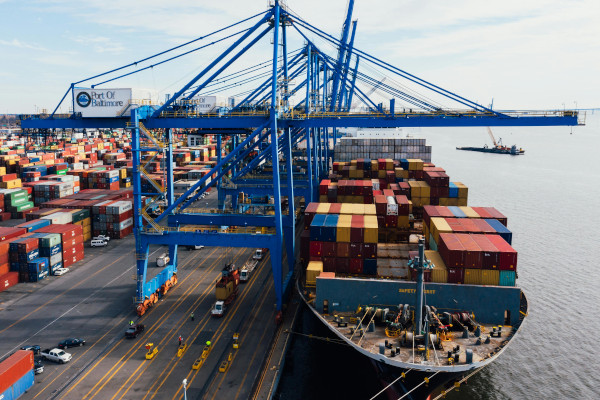When a Dun & Bradstreet report came out in March suggesting that most supply chains are underprepared for big disruptions, there may have been a collective yawn amid a “it won’t happen to us” discussion. But now a report from supply chain management platform Kinaxis is adding more disruption to the fire.
According to the research, less than one-fifth (17%) of global supply chain leaders say their companies can respond to disruptions within 24 hours. Even more distressing is that 67% said they are “not very satisfied” with their firm’s response time.
“It’s more common than ever on quarterly earnings calls to hear that supply chains make or break success and this data proves that there is a tremendous opportunity across all sectors to improve resilience and risk mitigation,” said John Sicard, president and CEO at Kinaxis. “Cutting-edge, AI-enhanced, end-to-end orchestration tools that enable companies to gain transparency, agility and improved collaboration can help address these compounding trends and make chief supply chain officers the heroes instead of the scapegoats the next time trouble appears on the horizon.”
Kinaxis surveyed 1,800 supply chain decision-makers around the world to compile the report, which was produced by IDC.
Other key findings include:
- Industrial respondents rate their resiliency highest (47%), while retail (29%) and aerospace (27%) rate themselves lowest
- 42% of consumer product respondents rated their supply chain orchestration as mature, the highest among all verticals
- 25% of respondents plan to move to new technologies in the next year to improve resilience
- 33% want supply chain orchestration platforms that offer AI/genAI capabilities
- 63% view their supply chain as some form of competitive advantage over the next 12 months, but it drops to 48% across the next 1-3 years
- 37% said the biggest roadblock to adopting a supply chain orchestration application was not finding the right vendor solution
Kinaxis noted that despite the lack of confidence in their business’ ability to respond, 97% of respondents said better orchestration tools would have a modest (44%) or significant (53%) impact on supply chain performance. They are also optimistic about the role technology can play in improving the response time.
Simple steps to avoiding VUCA
As supply chains continue to grow more complex, it will be imperative for businesses of all sizes to address their supply chain challenges. This starts with improving communication among suppliers or even diversifying their supply chains. Those who ignore the warnings are leaving their businesses vulnerable to reputational risk and lost profits.
“Buyers are accepting a disproportionate amount of risk by not doing some of these simple things,” said Steve Yurko, CEO at apexanalytix, a provider of supplier management solutions. “It really is accepting more risk than they should.”
For those focused on supply chain resilience, the Dun & Bradstreet report found that 1 in 3 firms are considering diversifying their supply chains to multiple sources and regions as their top priority, while 1 in 4 are considering improving supplier communication and consolidation. Companies are also focused on localization or nearshoring initiatives, adopting more resilient supply chain models, and incorporating ESG into sourcing decisions.
Dealing with VUCA—volatility, uncertainty, complexity and ambiguity—was the topic of a recent Talking Supply Chain podcast with guest Amber Salley, vice president of industry solutions for GAINS.
“We have identified what we call a performance gap and you can think of this performance gap as the gap between how you want your supply chain to operate and how you want to be able to fulfill your customer needs at a reasonable cost, and the methods that you have in place to actually manage your supply chain to meet those goals,” Salley said. “And this performance gap is greatly impacted by VUCA.”
Salley said that to effectively manage in a VUCA world, supply chains must embrace VUCA.
“Rethink your approach to managing your supply chains and how you rethink your approach to leveraging technology,” she said. “You are in a better position to start to narrow that performance gap which would give you a competitive edge against your competitors.”
SC
MR


More Disruption
- Fighting Disruption: Synchronizing Supply Chain Execution
- One door closes, a better one opens
- Predicting the future is impossible; so focus on mitigating risk and building resiliency
- Moody’s weighs in on insurance risks supply chains face today
- The rise of customer-centric supply chains
- More Disruption
What's Related in Disruption

 Explore
Explore
Topics
Business Management News
- The hard job of teaching soft skills
- Trump picks former Wisconsin congressman Sean Duffy for DOT secretary
- Made in Mexico, manufactured by China
- Retail sales see gains in October, reports Commerce and NRF
- Balancing green and speed: Home delivery insights from the pandemic era
- AdventHealth named top healthcare supply chain by Gartner
- More Business Management
Latest Business Management Resources

Subscribe

Supply Chain Management Review delivers the best industry content.

Editors’ Picks




